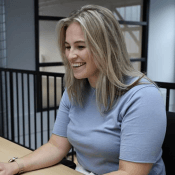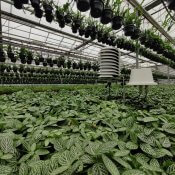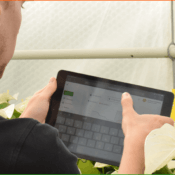Smart sensing for storage: lessons from the potato sector
When you think of smart farming, what comes to mind? Sensors in greenhouses, meticulously measuring crops and their environment? A weather station in the middle of a field? Neither image is, of course, incorrect. Greenhouse and arable farmers are changing their industry, making the most of limited resources, and delivering healthier and more delicious crops with data. The proliferation of accessible, inexpensive and user-friendly sensory analytics technology makes it possible for any farm— regardless of budget or acreage— to be data-driven in its decision making. But the story doesn’t end at growing.
From cultivation to storage and processing, transport to retail — produce travels a long way before arriving on a consumer’s plate. By measuring and optimising conditions, and communicating key metrics between stakeholders every step of the way, agribusinesses can streamline operations, improve profits, and reduce unnecessary losses across the chain.
The Agriculture and Horticulture Development Board (AHDB) and Potato Council’s Store Managers’ Guide provides a detailed overview of best practices for potato storage. Though comprehensive, the document is 56 pages long, so we’ve highlighted some of the key variables for storage optimization, and where smart sensing technology can make a difference. While these best practices are specific to potatoes, a similarly data-driven approach can be applied to other crops.
Why monitor storage?
Simply put, because growing a perfect crop doesn’t guarantee that it will stay perfect— especially when conditions in storage can be fluctuating, volatile, and potentially impact the health, quality and taste of the product. As the AHDB Store Managers’ Guide emphasizes,“with some crops spending longer in storage than they do in the ground, it follows… that potatoes in stores should be afforded a similar level of management input as might be applied to a growing crop.” Delicious, high-quality and high market value crops require optimised conditions even after harvest.
What are the goals of storage monitoring?
While preventing decay and damage is certainly the most obvious goal, maintaining quality goes beyond simply avoiding rot. Real-time data on storage conditions can help store managers respond to changing circumstance in order to maintain consistency of product, “in accordance with the market specification.” Sensory data also helps with traceability, enabling communication and optimisation across the chain. When it comes to monitoring technology, price point and ROI matters. It’s key that store managers can track and respond to changes “at an economic and sustainable cost to earn a worthwhile return.”
Which metrics matter?
Storage environments are dynamic, and the interplay of environmental factors can be the difference between profit and loss. So what should store managers pay attention to? And which sensors can help them track key metrics?
Temperature – humidity and dew-point
According to the AHDB, a sealed and insulated store with stable temperature, and a relative humidity of 90-100% can help ensure consistency of potato quality, and prevent tuber weight loss. Condensation resulting from “warm, moisture-laden air coming into contact with cooler potatoes” risks decay. According to the Store Managers’ Guide, “good store management should…ensure crop temperatures are as uniform as possible” and recommends sensor technology “to measure differences as small as 0.5°C.”
Furthermore, “Where tubers have been subjected to wounding (e.g. by handling during harvest)… The speed of this process, which is important for preventing moisture loss and disease ingress, is affected by a number of factors. These include storage temperature and humidity, with warmer temperatures and higher humidity reducing the time required for wound healing.”
Alongside ambient temperature and dew-point, airflow rate is crucial to the rate of drying, and can impact wound healing. The AHDB points to studies which show that “disease development [can] be markedly slowed by dry-curing techniques” and recommends air flow to be “as uniform as possible throughout the store, to give even drying and stable crop temperatures.” Monitoring airflow with sensors can help store managers the balance and uniformity needed to maintain disease-free crops.
Monitoring and managing light exposure can help store managers prevent crop loss from colour change. According to the AHDB, “tubers exposed to light will turn green, which results from the synthesis of chlorophyll. Chlorophyll is itself harmless but green tubers are generally rejected because they have elevated levels of glycoalkaloids, a group of natural toxicants present in potatoes.” Measuring and minimizing light exposure in storage can prevent greening.
Ethylene levels in the ambient air, in combination with CO2 and oxygen, can be used to inhibit potato sprouting, and can impact colour and bruise susceptibility. Measuring ethylene levels is crucial to maintaining an optimised atmosphere for storage.
The AHDB emphasizes that “the main priority for the potato crop is to control excessive build-up of CO2,” which, when in excess, can negatively affect flavor and coloring, and impact sprouting.
Monitor out of the box, scale when you need to
With the 30MHz Smart Sensing Toolkit, just choose the combination of sensors you need, and get started in seconds. With access to a power source and an internet connection, even the least technical of team members can deploy a sensor network and see real-time data in the ZENSIE dashboard within minutes.

Get a full remote overview of locations all over the world, generate heat maps, graphs, and alerts, and easily export data to share with partners or customers.

Your private network strengthens as it grows, so more sensors can be added at any time. Want to know more about optimising storage conditions with sensory data? Take a look at some of our customer stories, and send us a note below.


30MHz is typing… Our extended support team is ready to chat!
At 30MHz we think it’s important that our users can use our platform in an optimal way. At times you may have questions and you would like some help from our support team. Email and our support page filled with helpful articles were your go to’s. But we thought it was time for something extra… ...Read more
New 30MHz connect casing: How we protect your tech
To make sure your dataflow is fully protected, 30MHz introduces a new connect casing: waterproof, dust proof and even resistant to hits. This special shield will last longer and ensure a reliable dataflow from the connected sensor. What does that full protection mean? That’s what we will explain in this article. Watertight: resistant to wetness ...Read more
Log & Solve continues with 30MHz
From 1 November, Log & Solve will continue to grow within 30MHz. With this, Log & Solve and 30MHz strengthen each other in technical expertise and cultivation knowledge to help horticulture innovate. Log & Solve originated from Klasmann-Deilmann. This allows the substrate producer to properly monitor their transition to sustainably reusable raw materials themselves and ...Read more


